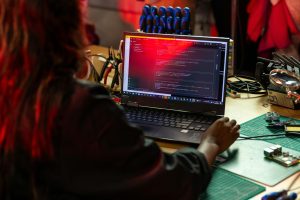Integrating coding and robotics into everyday lessons
With the increasing advancement in technology, it has become crucial for educators to keep up with the changing times and prepare students for the future. The integration of coding and robotics into everyday lessons has become a hot topic in the education world, and for good reason. Not only does it make learning more engaging and fun, but it also helps students develop essential skills that are highly sought after in today’s digital age.
The Need for Coding and Robotics in Education
In recent years, there has been a growing demand for professionals in the field of technology. The job market is constantly evolving, and the need for individuals with coding and robotics skills is on the rise. With the rise of artificial intelligence and automation, it has become vital for students to have a basic understanding of coding and robotics, even if they do not wish to pursue a career in technology. This is where the integration of coding and robotics into everyday lessons comes into play.
The Benefits of Integrating Coding and Robotics into Lessons
1. Development of Problem-Solving Skills
Coding and robotics activities require students to think critically and come up with solutions to various problems. This promotes problem-solving skills, which are essential in every aspect of life. By integrating coding and robotics into everyday lessons, students are presented with real-world problems that they must analyze and solve using computational thinking skills.
2. Enhances Creativity and Innovation
Coding and robotics are not just about lines of code and robots; they allow students to unleash their creativity and imagination. By providing students with the opportunity to create something new, they are encouraged to think outside the box and find unique solutions to problems.
3. Prepares Students for the Future Workforce
As mentioned before, the job market is constantly evolving, and the demand for professionals with coding and robotics skills is increasing. By integrating these skills into everyday lessons, students are better equipped to enter the workforce and adapt to the ever-changing technological landscape.
4. Encourages Collaboration and Teamwork
Coding and robotics activities often require students to work in groups, promoting collaboration and teamwork. This not only helps students learn how to work together towards a common goal, but it also teaches them valuable communication skills.
Ways to Integrate Coding and Robotics into Everyday Lessons
1. Use Educational Apps and Games
There are numerous educational apps and games available that teach students basic coding and robotics skills while making learning entertaining. These can be incorporated into everyday lessons or used as a fun activity during break time.
2. Create Coding and Robotics Stations
Dedicate a specific area in the classroom for coding and robotics activities. Set up different stations with various coding and robotics materials and let students rotate between them. This will not only keep students engaged but also expose them to different types of coding and robotics activities.
3. Integrate Coding and Robotics into Existing Lessons
Coding and robotics can be integrated into various subjects, such as math, science, or even language arts. For example, students can create a robot that recites their favorite poem or code a game that teaches multiplication tables. This allows for cross-curricular learning and makes lessons more interactive.
4. Organize a Coding and Robotics Club
For students who are particularly interested in coding and robotics, organizing a club can provide them with an outlet to further explore their skills. This club can meet after school and work on more complex projects, such as building robots that can perform specific tasks.
Conclusion
The integration of coding and robotics into everyday lessons is not only beneficial but necessary in today’s fast-paced and technology-driven world. It promotes the development of essential skills that are highly sought after by employers and prepares students for the future. By incorporating these skills into everyday lessons, educators are equipping students with the necessary tools to succeed in a digital world.
Remember, it is never too early to start teaching students coding and robotics. With the right approach and resources, educators can make learning these skills fun and engaging for students of all ages. So why wait? Start integrating coding and robotics into your everyday lessons and witness the positive impact it has on your students’ learning journey.










